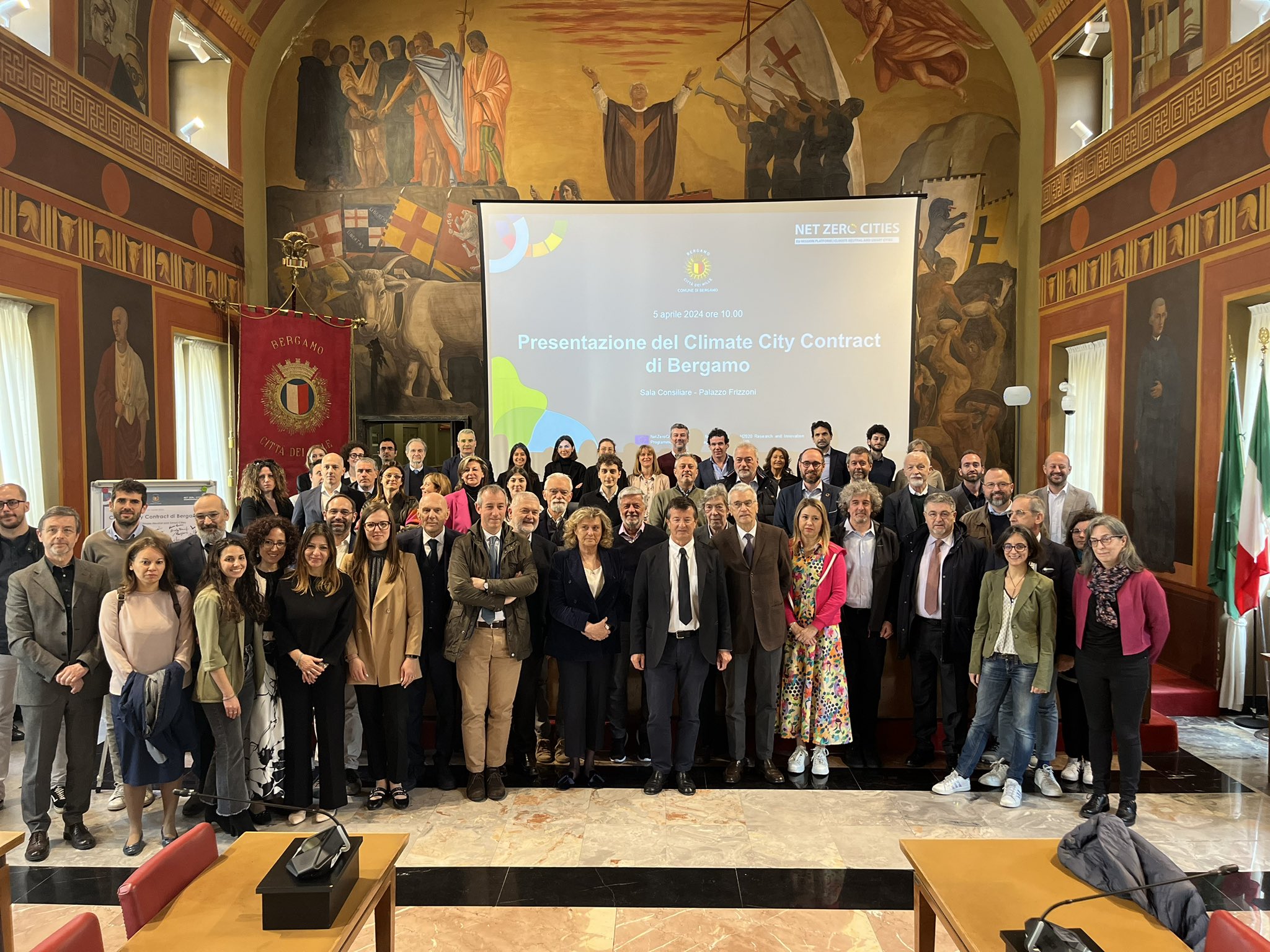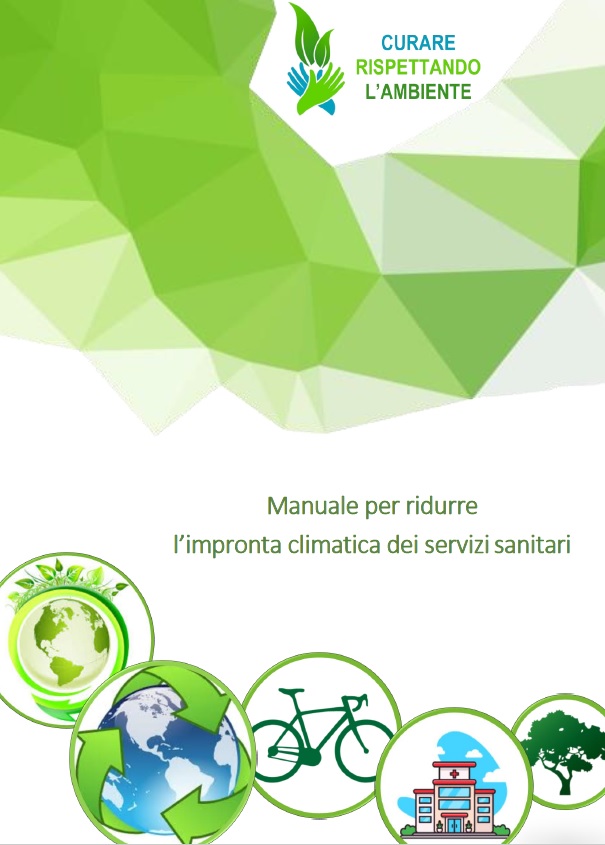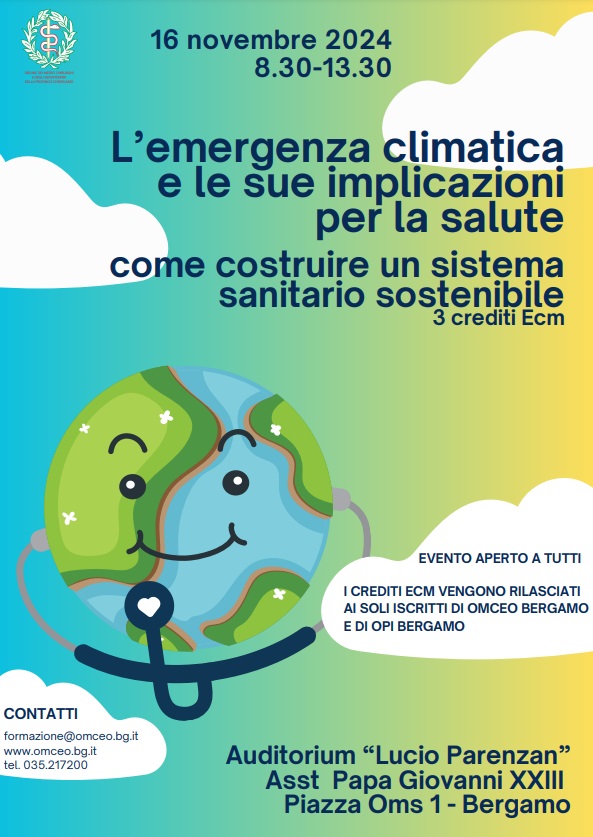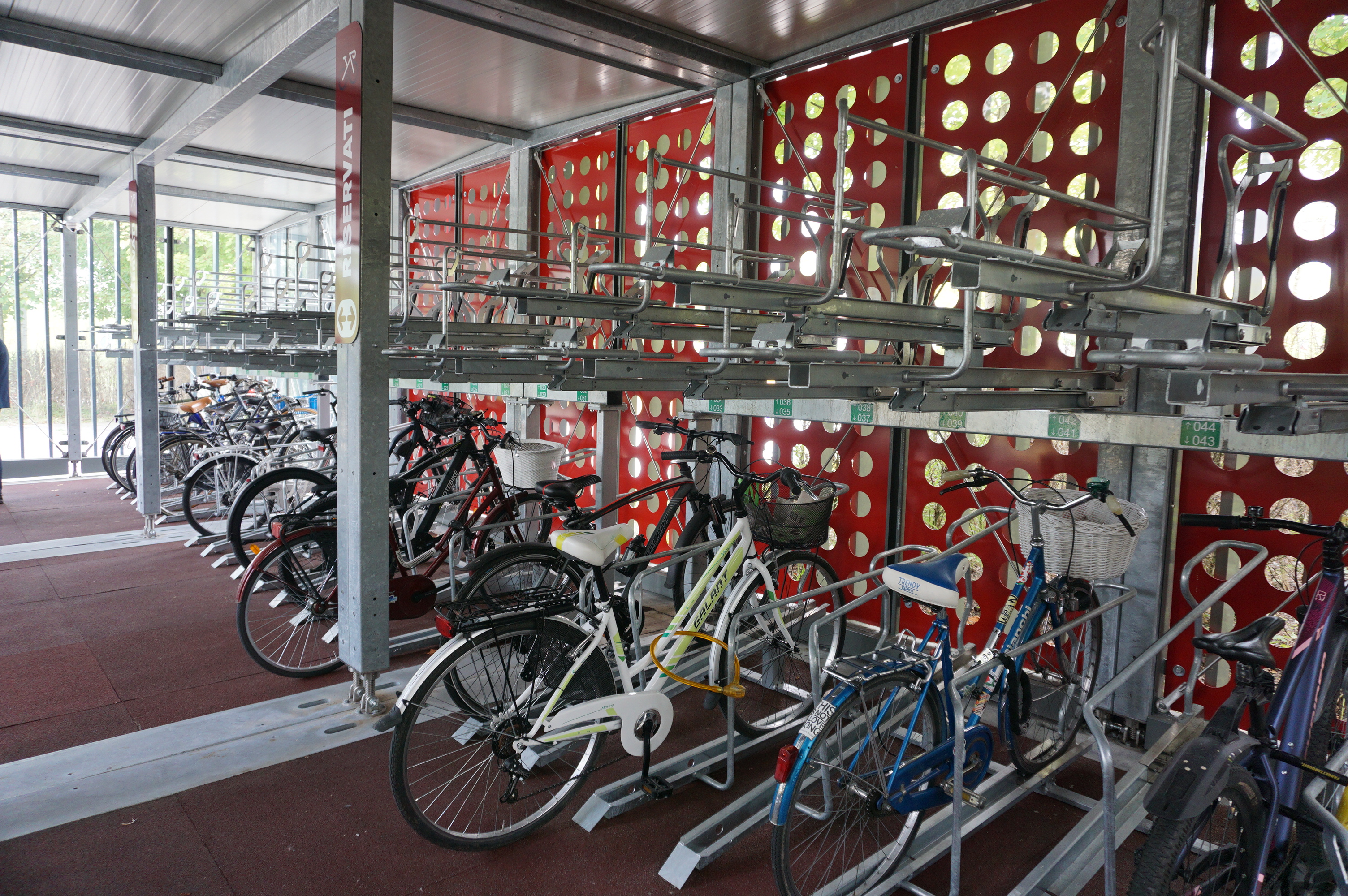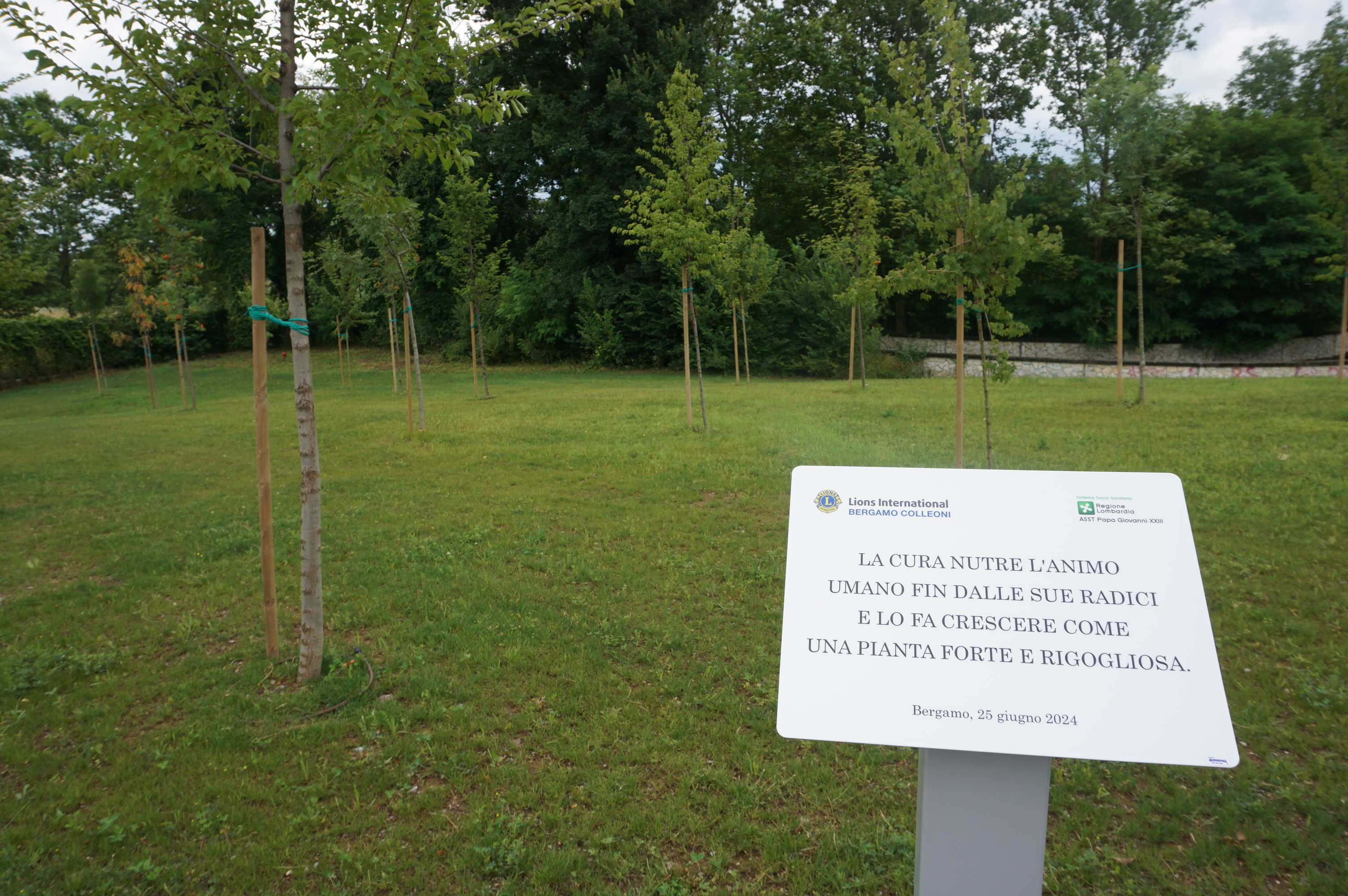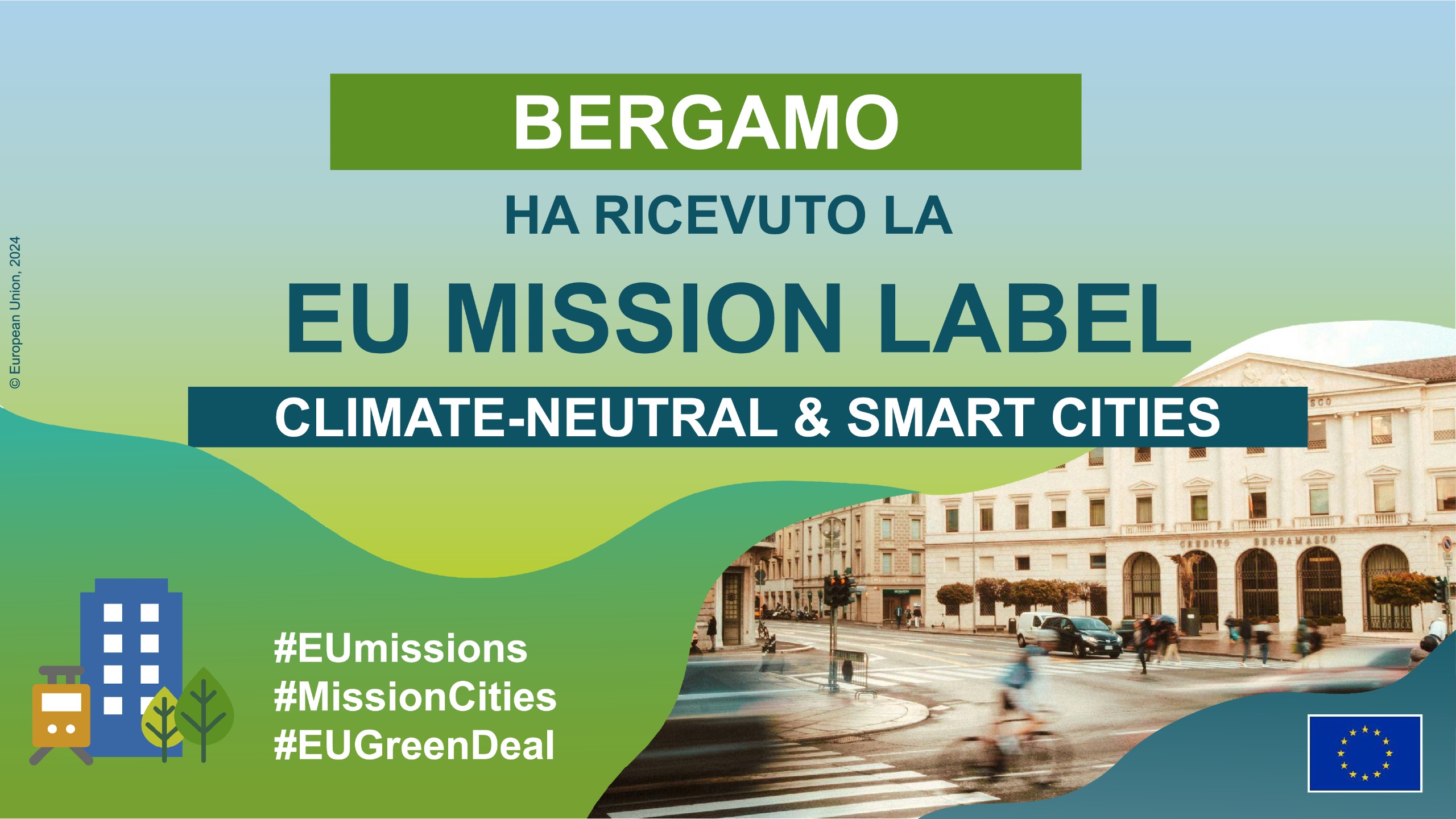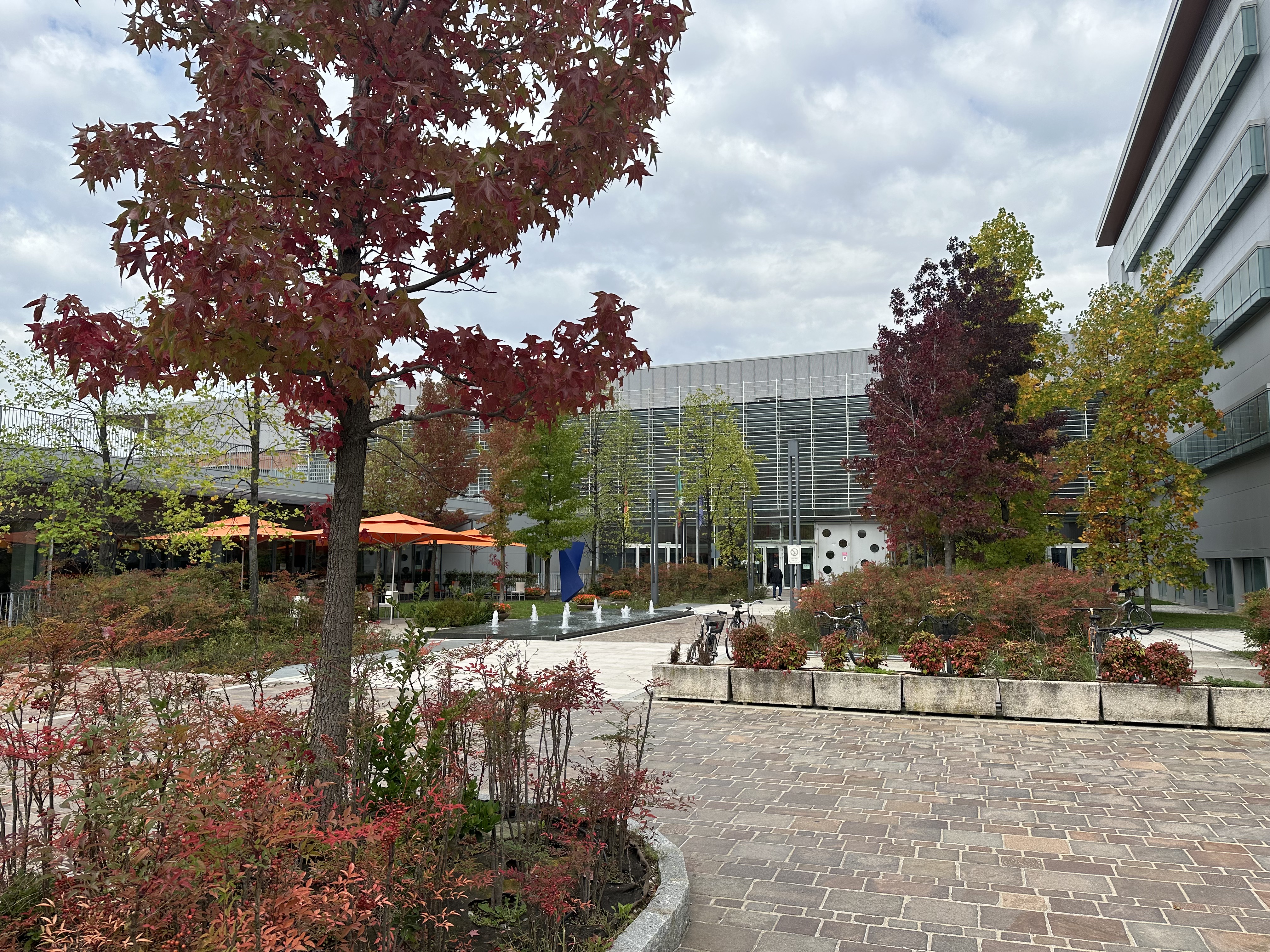Shaping a circular industrial ecosystem and supporting life-cycle thinking
Climate-Neutral Health Systems
Healthcare Services and Ecological Transition: An Alliance Between Institutions
This project presents a comprehensive, holistic and systemic strategy to minimize the carbon footprint of the health sector while enhancing public and environmental health. A user-tailored handbook outlines a sustainability roadmap that guides this transformation, offering solutions across twelve key areas including energy, transportation and waste management. The project highlights the importance to reshape mindsets and foster a lasting cultural shift towards resilience and sustainability.
Italy
Local
Bergamo
Mainly urban
It refers to other types of transformations (soft investment)
Yes
2024-11-16
No
No
No
As a representative of an organisation, in partnership with other organisations
This project represents a pioneering initiative designed to transform healthcare facilities into climate-neutral, inclusive and aesthetically enriching environments. By integrating sustainability into hospital management, the project provides a practical framework to reduce healthcare’s carbon footprint while improving patient experiences, staff well-being and community engagement. It aligns with the principles of the European Green Deal and contributes to the decarbonization of healthcare services, fostering a holistic transition toward a sustainable and people-centered healthcare system. The handbook developed within this project stands as a concrete outcome and serves as a valuable reference guide for hospitals, elderly care residences, clinics and healthcare facilities committed to embarking on a sustainability journey. It acknowledges climate change as a profound crisis and the most urgent public health challenge of the 21st century. For most healthcare organizations, at least in Italy, this topic remains largely unexplored. This manual is designed to address this gap, serving as a practical guide for healthcare management teams committed to decarbonizing their services and raising awareness among professionals about the importance of integrating sustainability into their daily work.
It is crucial to emphasize that emission reduction measures do not come at the expense of patient care. On the contrary, they enhance the quality and safety of treatments. The recommendations in this manual are based on the experience of experts from various disciplines actively engaged in this field, combined with an extensive review of scientific literature.
This manual addresses that user's need by offering a clear, practical approach with concrete examples. Adopting the actions proposed in the manual, it is possible to assess the impact of multiple products and services, considering the entire life cycle, highlighting the importance of circularity.
It is crucial to emphasize that emission reduction measures do not come at the expense of patient care. On the contrary, they enhance the quality and safety of treatments. The recommendations in this manual are based on the experience of experts from various disciplines actively engaged in this field, combined with an extensive review of scientific literature.
This manual addresses that user's need by offering a clear, practical approach with concrete examples. Adopting the actions proposed in the manual, it is possible to assess the impact of multiple products and services, considering the entire life cycle, highlighting the importance of circularity.
Climate Change
Sustainability
Healthcare
Green Hospitals
Climate Leadership
Hospitals consume vast amounts of energy, water and raw materials, while medical waste disposal and chemical pollution further impact ecosystems. The handbook presented here, introduces a comprehensive and holistic sustainability strategy to reduce the carbon footprint of healthcare facilities, ensuring that medical care contributes to both human health and planetary well-being. The handbook addresses a range of critical areas essential for sustainable hospital management. One of its key focuses is energy-efficient building operations. For this critical area, we suggested to adopt sustainable practices such as the choice of LED lighting or automated energy management systems. Sustainable transportation is another fundamental pillar. The handbook encourages the electrification of hospital transport fleets, while fostering sustainable mobility solutions such as cycling and public transportation for visitors. A climate-conscious procurement strategy is also emphasized, prioritizing local and low-carbon suppliers. By implementing these measures, hospitals can effectively address all three scopes of greenhouse gas emissions, corroborating a far-reaching and well grounded sustainability approach. In addition, the handbook promotes circular economy principles to reduce hospital waste. The preference for reusable medical equipment, eco-friendly materials and low-impact packaging is put forward, alongside the implementation of zero-waste strategies, which include strict waste segregation to maximize recycling. Again, the handbook highlights the importance of reducing emissions from anaesthetic gases, recommending the replacement with sustainable alternative. ASST Bergamo East, for example, drastically reduced the use of Desflurane, in favour of Sevoflurane, promoting a sustainable medical procedure. The integration of these strategies helps hospitals to improve their environmental performance, paving the way for a more sustainable and climate-resilient healthcare sector.
Hospitals and healthcare facilities are often functional but visually sterile, prioritizing efficiency over human-centered design. However, research studies show that aesthetics play a crucial role in patient recovery, staff well-being and overall healthcare experience. The vision we proposed here, integrates biophilic design and cultural sensitivity to create healing environments that promote well-being, inclusivity and sustainability. The handbook developed in this project stimulates the creation of green spaces such as gardens and parks to improve air quality, provide natural cooling and, the most important, absorb CO₂. Hospital gardens and outdoor patient areas can offer spaces for relaxation, rehabilitation and therapeutic activities. Therefore, a climate-neutral structure should serve as an opportunity to enhance human well-being. Aesthetic improvements should also consider staff well-being, guaranteeing that hospitals are not just workplaces but spaces of comfort and inspiration. The handbook promotes comfortable workspaces for healthcare professionals and restorative outdoor areas where sustainability and aesthetics live in symbiosis, generating a forward-looking environment, 'climate and human-friendly'. I believe it is important to consider that the project originates from a local context, with cities, such as Bergamo in our case, playing a pivotal role as drivers of change. Urban centres are at the forefront of transformation, and within this framework, citizen well-being becomes a fundamental priority. Consequently, hospitals and healthcare facilities should embody the city's vision for sustainability and progress, also from an aesthetic point of view. Bergamo is actively advancing toward climate neutrality, being one of the 112 cities selected by the European Commission for the NET ZERO CITIES initiative. By embracing nature, cultural identity and human-centered design, healthcare spaces become places of beauty and holistic care.
Inclusion in healthcare means ensuring that every individual, regardless of age, ability, income, or background, has equal access to high-quality, sustainable and dignified care. This is a very important concept that we tried to include in our vision, concomitantly with sustainability. The handbook presented here places inclusivity at the heart of hospital design, since we want to create climate-neutral, but also people-centered, hospitals. The fundamental goal of this project is to have green hospitals where the level of the medical care is manifest and possibly even more proficient than before. Through universal design principles, the project fosters a human-centered approach to medical care. Our vision embraces a systemic and holistic approach in which sustainability and inclusion are not separate concepts but interconnected elements, forming a single, unified framework. Digital solutions play a crucial role in making healthcare more inclusive and accessible, particularly for local communities, elderly patients and individuals with mobility impairments. The handbook suggests to integrate telemedicine platforms, allowing remote consultations, which reduce the need for unnecessary visits, particularly for patients in remote areas. The use of wearable health monitoring devices enables continuous patient care without requiring frequent hospital visits. Moreover, electronic health records ensure seamless information-sharing between hospitals, doctors and caregivers. Finally, user-friendly patient portals, designed with accessibility features (e.g., voice navigation, large fonts) for elderly and visually impaired users are important sustainable solutions. Hospitals should be integrated into their communities, acting as centres for public health education and social growth. In the last chapter of the handbook, we suggested the organization of workshops or training activities, to bring people closer and try to change the mindset and the culture.
The project and the relative handbook, which represents the main result of the project, was designed to directly benefit citizens by transforming hospitals into sustainable, inclusive, and community-centered spaces. By integrating patients, doctors, local communities, and also civil society organizations into the design and implementation process, the project ensures that healthcare facilities are not only environmentally friendly but also better suited to the needs of those they serve. Citizens, both patients and healthcare professionals, experience a range of tangible benefits from the project, including for example healthier environments, improved patient experience and lower healthcare costs; indeed, by reducing energy and resource consumption, hospitals can allocate more funds to patient care. This makes healthcare services more affordable and accessible in the long run. As emphasized in the key objectives related to sustainability, inclusion and aesthetics, this project is deeply connected to the city, which plays a central role in this context. The Municipality of Bergamo is actively engaged in this transition, making the project a strong example of synergistic collaboration. The outcomes of the project will be tangible not only in Bergamo, where some actions have already been initiated, but also in other cities, thanks to the significant visibility and extensive dissemination efforts surrounding this initiative.
Furthermore, due to the strong impact of this project, we have achieved another important milestone: our involvement in the Global Green and Healthy Hospitals network, which represents more than 7,000 hospitals worldwide. In addition, we have engaged associations of nurses and pharmacists, recognizing that the project's outcomes could be highly relevant to other healthcare organizations as well. As a result, the impact on citizens is substantial, and their involvement adds further value to our initiative.
Furthermore, due to the strong impact of this project, we have achieved another important milestone: our involvement in the Global Green and Healthy Hospitals network, which represents more than 7,000 hospitals worldwide. In addition, we have engaged associations of nurses and pharmacists, recognizing that the project's outcomes could be highly relevant to other healthcare organizations as well. As a result, the impact on citizens is substantial, and their involvement adds further value to our initiative.
The project is a collaborative initiative that brings together a diverse network of stakeholders, ensuring that sustainable healthcare transformation is guided by different expertise and cross-sectoral partnerships. Stakeholder engagement is key to the project, advancing collaboration between clinicians, healthcare professionals, researchers and other partners. This heterogeneous consortium contributes with their knowledge and experience to maximize the impact and scalability of the initiative. Their involvement ensures that sustainable practices are practical, efficient and beneficial for both patients and staff. Doctors and nurses provided insights on how sustainable initiatives impact patient care, helping to balance sustainable environmental goals with medical effectiveness. Researchers play a fundamental role in providing inputs and cognizance into both the chemical and toxicological domains, as well as contributing engineering expertise essential for calculating CO₂ emissions and assessing the full life cycle of chemicals, materials, products and services. Municipality of Bergamo is also a key stakeholder, ensuring that products align with policy frameworks while integrating social and economic considerations. Additionally, energy and mobility managers are crucial to the project, offering valuable perspectives on the scientific, regulatory and policy aspects of these vital sectors.
From a European perspective, the role of the European Commission is essential, particularly in selecting Bergamo as one of the cities leading the ecological and climate transition. This broader framework has been instrumental in enhancing our project, allowing us to refine our objectives and contribute to a global transition beyond the local context of Bergamo. Ultimately, our project represents a convergence of diverse visions, ideas and expertise, working together to drive meaningful change in the healthcare sector and providing innovative solutions for this global challenge.
From a European perspective, the role of the European Commission is essential, particularly in selecting Bergamo as one of the cities leading the ecological and climate transition. This broader framework has been instrumental in enhancing our project, allowing us to refine our objectives and contribute to a global transition beyond the local context of Bergamo. Ultimately, our project represents a convergence of diverse visions, ideas and expertise, working together to drive meaningful change in the healthcare sector and providing innovative solutions for this global challenge.
The project is a truly interdisciplinary initiative, integrating expertise from healthcare, environmental science, engineering, digital innovation and social sciences to redesign hospitals into sustainable, inclusive, and aesthetically enriching spaces. The project combines scientific research, practical application and stakeholder engagement, ensuring that its solutions are both theoretically sound and operationally feasible. The following key disciplines play an essential role in the design and development of the project:
- Medical and healthcare sciences: ensuring that sustainability measures align with patient safety and clinical efficiency.
- Environmental Science and climate research: assessing the carbon footprint of hospitals, guiding emissions reduction and improving resource efficiency.
- Engineering and renewable energy: developing hospital-specific clean energy solutions.
The project’s success relied on strong interdisciplinary collaboration through a co-creation process, where experts from diverse fields worked together to integrate sustainability into healthcare without compromising medical effectiveness. This synergy was achieved through an intensive working group effort, beginning with initial brainstorming, followed by periodic meetings, and culminating in the outlined results. Through an intense dissemination process, it was possible to interact with people belonging to different hospitals and healthcare facilities, starting the creation of a valuable network aimed at shaping a global community. This community represents a cornerstone to face a global challenge, arguably the most drastic and overwhelming challenge of the recent history. Policy plays a prominent role, since the city, with its political, social and economic implications, is a fundamental driver in this sustainability pathway. In conclusion, I firmly believe that the cooperation of such a multidisciplinary team is the key added value of this project.
- Medical and healthcare sciences: ensuring that sustainability measures align with patient safety and clinical efficiency.
- Environmental Science and climate research: assessing the carbon footprint of hospitals, guiding emissions reduction and improving resource efficiency.
- Engineering and renewable energy: developing hospital-specific clean energy solutions.
The project’s success relied on strong interdisciplinary collaboration through a co-creation process, where experts from diverse fields worked together to integrate sustainability into healthcare without compromising medical effectiveness. This synergy was achieved through an intensive working group effort, beginning with initial brainstorming, followed by periodic meetings, and culminating in the outlined results. Through an intense dissemination process, it was possible to interact with people belonging to different hospitals and healthcare facilities, starting the creation of a valuable network aimed at shaping a global community. This community represents a cornerstone to face a global challenge, arguably the most drastic and overwhelming challenge of the recent history. Policy plays a prominent role, since the city, with its political, social and economic implications, is a fundamental driver in this sustainability pathway. In conclusion, I firmly believe that the cooperation of such a multidisciplinary team is the key added value of this project.
The project represents a trailblazing initiative in Italy and beyond, as it introduces a systemic, interdisciplinary and holistic approach to sustainability in healthcare, a sector that has traditionally lagged in environmental innovation. Unlike other sustainability efforts that focus on isolated interventions (e.g., energy efficiency or waste reduction), this project is a comprehensive strategy that integrates multiple aspects such as climate actions, digital transformation, sustainable nutrition, chemical substitution (in line with the Safe and Sustainable by Design paradigm) and inclusivity into a single framework for hospital decarbonization. While hospitals in some countries, such as England, as reported in our handbook, have begun addressing sustainability, Italy has yet to embark on this transition. Most hospitals in Italy must start from scratch to develop a large-scale approach to achieving climate neutrality. This project aims to be a precursor, proposing a visionary strategy and serving as a reference for other hospitals and healthcare facilities seeking to move toward a climate-neutral future. The project wants to be a replicable and scalable framework, adaptable to different healthcare facilities across regions, including small clinics and large hospital networks.
It is important to highlight that three members of the partnership leading this project are part of the international network Global Green and Healthy Hospitals, a vast alliance of hospitals united by the goal of reducing the environmental footprint of the health sector and contributing to improved public and environmental health. By leveraging the outcomes of our project and the advantages of being part of this influential network, we aim to lead the climate transition in Italy. The handbook drafted is a unique example of guideline for the health sector. It is a complete novelty in Italy so it can set an example in this field.
It is important to highlight that three members of the partnership leading this project are part of the international network Global Green and Healthy Hospitals, a vast alliance of hospitals united by the goal of reducing the environmental footprint of the health sector and contributing to improved public and environmental health. By leveraging the outcomes of our project and the advantages of being part of this influential network, we aim to lead the climate transition in Italy. The handbook drafted is a unique example of guideline for the health sector. It is a complete novelty in Italy so it can set an example in this field.
The project offers a scientifically rigorous, interdisciplinary methodology that ensures the effective decarbonization of hospitals maintaining, at the same time, high standards of patient care and operational efficiency. The methodology combines different lines of evidence, moving towards real case scenarios. Therefore, this is a scalable, adaptable and evidence-based framework for sustainable healthcare transformation. As outlined in the handbook, we have identified a dual approach to achieving climate goals. The first is a top-down strategy, where decisions are made at the highest level and then communicated to the rest of the team. The second is a bottom-up approach, driven by individual operators who are particularly sensitive to climate change. These individuals act independently yet synergistically, guided by their ideals and personal motivation. The final goal is the same.
In our specific context, we can observe that the management board of our institutions demonstrate a strong commitment to driving this transition, effectively enabling a solid top-down approach. This is evident in the establishment of an internal 'Green Team' and the launch of new initiatives and projects to reinforce our credibility. For instance, at the Mario Negri Institute, we have introduced water dispensers to eliminate plastic bottles and are promoting a Green Menu. ASST Papa Giovanni XXIII built a Bicycle Station and renovated territorial buildings, respecting the principle of “Do Not Significant Harm". They also promoted a Green Menu in their canteen. Moreover, we outlined a methodology to estimate the GHG emission, in terms of CO₂ equivalent. We specified the applicable tools and the mathematical equations required for these calculations. Additionally, we compiled tables with emission factor values to serve as reference points for calculating CO₂ emissions. Furthermore, we designed the structure of the tool to ensure efficient information management and KPI traceability.
In our specific context, we can observe that the management board of our institutions demonstrate a strong commitment to driving this transition, effectively enabling a solid top-down approach. This is evident in the establishment of an internal 'Green Team' and the launch of new initiatives and projects to reinforce our credibility. For instance, at the Mario Negri Institute, we have introduced water dispensers to eliminate plastic bottles and are promoting a Green Menu. ASST Papa Giovanni XXIII built a Bicycle Station and renovated territorial buildings, respecting the principle of “Do Not Significant Harm". They also promoted a Green Menu in their canteen. Moreover, we outlined a methodology to estimate the GHG emission, in terms of CO₂ equivalent. We specified the applicable tools and the mathematical equations required for these calculations. Additionally, we compiled tables with emission factor values to serve as reference points for calculating CO₂ emissions. Furthermore, we designed the structure of the tool to ensure efficient information management and KPI traceability.
The project is designed to generate long-lasting and systemic impact by transforming hospitals into climate-neutral, inclusive, and patient-centered facilities. Its scalable and replicable nature ensures that the initiative can extend beyond its initial implementation sites, influencing healthcare institutions at local, national and international levels. The project is based on several pillars: medical culture, scientific research, digital innovation, policies. Merging together these essential elements, we obtained a potion able to establish a new benchmark for sustainable healthcare that can be adapted (and adopted) across diverse healthcare contexts. The handbook developed has the ambitious goal to serve as standard guideline for other hospitals and healthcare institutions, therefore the manual itself is beautifully replicable and imitable by other entities. The synergy between top-down and bottom-up approaches provides a versatile methodology for anyone in the sector seeking to shift their mindset toward a climate-neutral system. The mathematical framework for calculating CO₂ emissions follows a standardized method, making it easily adaptable to various contexts. Additionally, the tool designed for data input, cleaning, evaluation, and management offers a user-friendly solution that enables internal calculations and estimations with ease. It is clear that the proposed project is highly replicable and transferable to other settings, serving as a foundation for transforming the Italian healthcare system from a sustainability perspective. Hospitals of all sizes can benefit from this project. The methodology indeed can be applied to large urban hospitals, small regional clinics and specialized healthcare facilities.
The project is focused in the city of Bergamo but it is replicable to diverse geographical settings.
The system can be espoused by public and private healthcare systems. Therefore, the project ensures easy adoption and large-scale implementation.
The project is focused in the city of Bergamo but it is replicable to diverse geographical settings.
The system can be espoused by public and private healthcare systems. Therefore, the project ensures easy adoption and large-scale implementation.
The healthcare sector is a major contributor to climate change, responsible for approximately 5.2% of global CO₂ emissions. Despite its essential role in public health, the sector has been slow to adopt systemic sustainability measures, making the transition to climate-resilient hospitals a critical global challenge. The climate crisis is already disrupting healthcare systems worldwide. Indeed, as indicated in scientific literature, and not just, rising temperatures and heatwaves are increasing hospital admissions for heat-related illnesses. This represents a clear indicator of climate change. Also, extreme weather events, such as hurricanes and floods are damaging healthcare infrastructure and disrupting medical supply chains. Let's not forget how increased air pollution intensifies respiratory diseases like asthma and chronic obstructive pulmonary disease. Finally, water scarcity affects the availability of clean water for medical procedures and sanitation in healthcare facilities. At the same time, hospitals themselves amplify these challenges through for example high energy consumption, relying on fossil fuels for heating, cooling, and medical equipment. Moreover, single-use medical plastics contribute to ocean pollution and landfill waste. Chemicals used in hospitals and in laboratories of health institutions contribute to chemicals contamination, affecting ecosystems and public health. The project is fully aligned with key international climate and health commitments, demonstrating a great attention to these global challenges. For example, the project covers some of the Sustainable Development Goals (SDGs), established by the United Nations.
It is important to highlight how the project was born riding the wave of the NET ZERO CITIES project, where the city of Bergamo is one of the selected cities to become climate-neutral.
To conclude, this is more than a project, it is a global movement toward climate-conscious healthcare systems.
It is important to highlight how the project was born riding the wave of the NET ZERO CITIES project, where the city of Bergamo is one of the selected cities to become climate-neutral.
To conclude, this is more than a project, it is a global movement toward climate-conscious healthcare systems.
The project wants to be the starting point to build together a new holistic, multidisciplinary and forward-looking health system. The integration of diverse figures and expertise delivers tangible environmental, economic and social benefits while ensuring that hospitals become agents of change in sustainable healthcare. The handbook developed within this project is a concrete and well-structured outcome that could be consider the 'bible' for clinicians and healthcare professionals. The actions outlined in the handbook align with the core vision of the institutions leading this initiative, establishing a new guiding framework. Through a robust dissemination process, we actively promote these principles, spreading awareness much like messengers of change, with the goal of reaching as many stakeholders as possible. The positive feedback we have received confirms the handbook’s potential to guide the sustainable transition of hospitals. Notably, three of the institutions at the forefront of this project, namely Mario Negri Institute, ASST Papa Giovanni XXIII and Bergamo East, have joined the international network Global Green and Healthy Hospitals during the project. Their commitment has positioned them as leaders in sustainability, setting a benchmark for Italian healthcare institutions in climate action. Additionally, these three institutions are signatories of the Climate City Contract (CCC), a pact initiated by local authorities to engage private and public entities in reducing CO₂ emissions and advancing the ecological transition. While CCC is a complementary initiative, it further underscores our dedication to sustainability and highlights the project’s broader impact, not only within healthcare systems but across the entire community. Actions advanced in our institutions like the green procurement or the adoption of a Green Menu, as well as the plastic recycling or the ideation of tools to calculate sustainability performances, represent amazing 'green' results.

